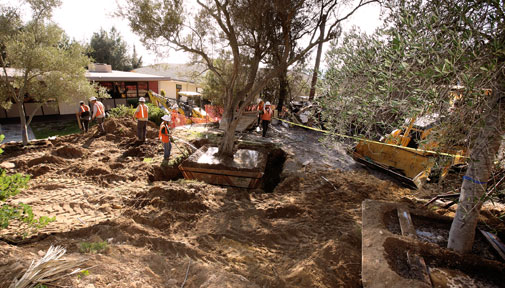Appeal Court Rules in Westmont's Favor
By
Westmont
 In a decision released this week, California’s Second District Court of Appeal unanimously supported Westmont’s plan to update its campus facilities, reaffirming a December 2007 Santa Barbara County Superior Court ruling that upheld unanimous approvals by the Santa Barbara County Board of Supervisors and the Montecito Planning Commission. A three-judge panel issued their finding after hearing arguments in Santa Barbara Oct. 22. To date, a total of 14 officials have made five consecutive unanimous decisions supporting Westmont’s Master Plan.
In a decision released this week, California’s Second District Court of Appeal unanimously supported Westmont’s plan to update its campus facilities, reaffirming a December 2007 Santa Barbara County Superior Court ruling that upheld unanimous approvals by the Santa Barbara County Board of Supervisors and the Montecito Planning Commission. A three-judge panel issued their finding after hearing arguments in Santa Barbara Oct. 22. To date, a total of 14 officials have made five consecutive unanimous decisions supporting Westmont’s Master Plan.
“Once again, we’ve received unanimous support for the lengthy, comprehensive and costly planning process we pursued to update our Master Plan,” says President Gayle D. Beebe. “We‘ve worked closely with the county and the local community, gathering input that ultimately resulted in a better project for everyone. This decision, like the ones before it, confirms that our project will not adversely affect the neighborhood.”
Eight years ago, Westmont began a long permitting process to update its previously approved Master Plan, undergoing extensive environmental review and public hearings. Under the updated plan, the college intends to build Adams Center for the Visual Arts, Winter Hall for Science and Mathematics, a chapel and a new residence hall in the first phase of construction and additional buildings in the future after a lengthy quiet period. Construction for the first phase is expected to take about three years to complete and has already begun. The college pulled permits for Adams Center and Winter Hall Nov. 12, the day before the Tea Fire devastated campus, destroying eight buildings and 15 faculty homes.
In May 2006, the college redesigned the project to incorporate guidance from the Montecito Board of Architectural Review and the Montecito Planning Commission, reducing total construction by more than 20,000 square feet and moving buildings away from the perimeter of the campus. The county imposed many new conditions as part of its approval, and the college has agreed to operate under a revised conditional use permit (C.U.P.) with 116 conditions, as compared to 31 under the prior C.U.P.
Filed under
Campus News